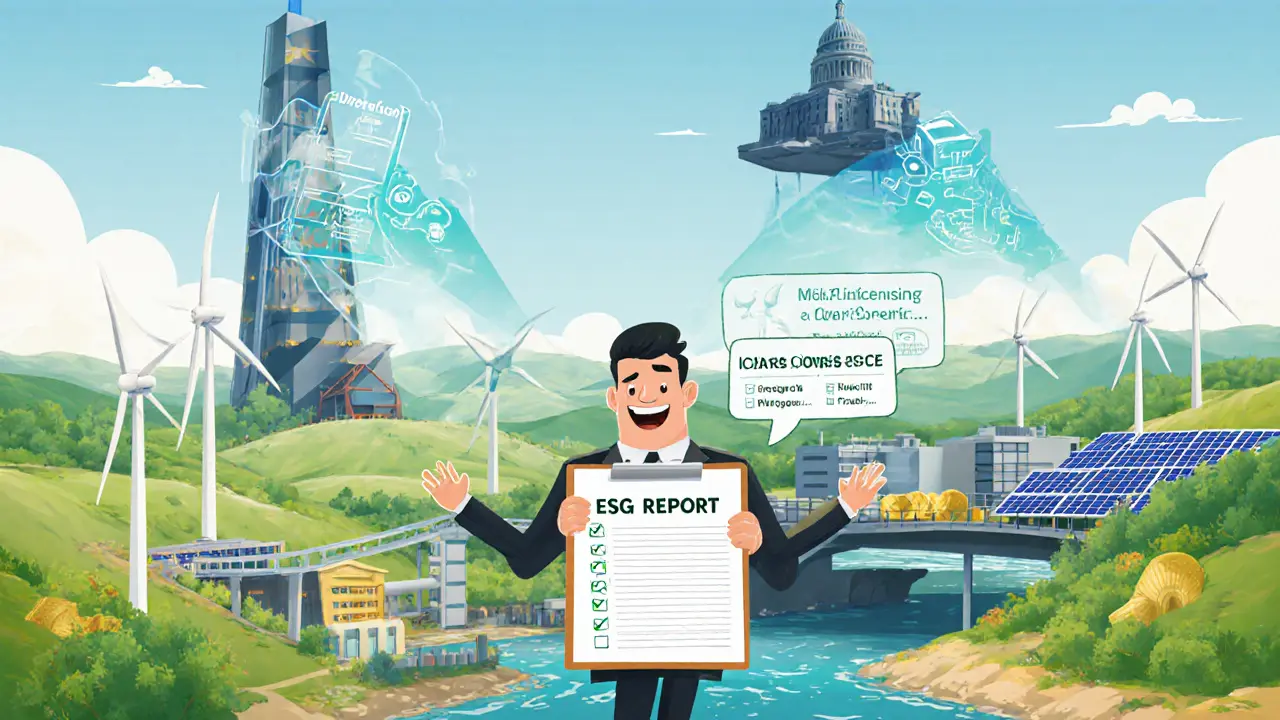Crypto Mining Compliance Cost Estimator
Estimated Annual Compliance Cost
Did you ever wonder why a mining farm that looks perfect on paper could suddenly be hit with a fine that shuts it down? In 2025 the legal landscape for crypto mining regulations finally stopped feeling like a wild west and started showing real structure - but only if you know where to look.
Why the legal maze matters now more than ever
Since March 2025 the U.S. government has moved from vague guidance to concrete statutes. The GENIUS Act the first comprehensive federal crypto legislation signed into law gave businesses a baseline for compliance, while the European Union’s MiCAR Markets in Crypto-Assets Regulation that took effect in December 2024 imposed licensing rules across the single market. Ignoring these changes isn’t an option - regulators are now armed with lower thresholds, higher penalties, and a clearer mandate to track every transaction.
Job #1: Map the regulatory bodies that watch your rigs
Understanding who’s watching is the first step to staying out of trouble. In the United States three agencies dominate the scene:
- FinCEN Financial Crimes Enforcement Network, enforcing AML/KYC under the Bank Secrecy Act
- SEC Securities and Exchange Commission, clarified that Proof‑of‑Work mining isn’t a securities activity
- CFTC Commodity Futures Trading Commission, oversees futures and derivatives linked to crypto assets
Across the Atlantic, the EU’s European Commission the executive body that enforces MiCAR and the upcoming taxonomy rules for mining takes the lead.
Job #2: Build an AML/KYC and Travel Rule program that actually works
Both FinCEN and MiCAR demand strict anti‑money‑laundering (AML) and counter‑terrorism financing (CFT) checks. The Travel Rule is the centerpiece: any transaction of $3,000 or more must carry the sender’s name, address, and wallet identifier. Failure to collect, store, and transmit that data can trigger civil penalties up to $10million per violation in the U.S., and hefty fines in the EU.
Here’s a quick checklist to get your compliance team moving:
- Implement a transaction monitoring system that flags transfers ≥$3,000.
- Store originator and beneficiary details for at least five years (U.S.) or ten years (EU).
- Ensure your wallet provider can embed the required fields in transaction metadata.
- Run regular audits against FinCEN’s 2025 AML guidance and the EU’s FATF‑aligned standards.
Job #3: Know how Proof‑of‑Work (PoW) and Proof‑of‑Stake (PoS) are treated differently
The SEC’s March 20, 2025 statement drew a line: Proof‑of‑Work mining the consensus mechanism where miners solve computational puzzles is not a securities activity, but Proof‑of‑Stake mining where staking power is tied to coin ownership could trigger securities law scrutiny. That means if your operation is planning to pivot to PoS‑based assets, you’ll need a whole new compliance playbook, including potential registration as an investment adviser.

Job #4: Navigate state‑level requirements in the U.S.
Beyond federal rules, every state adds its own flavor. Texas, for example, offers tax incentives but demands a state‑level money‑transmitter license if you accept fiat payments. New York’s BitLicense still applies to crypto‑related services, even if you only provide mining pool hosting. A practical tip: create a jurisdiction matrix that lists each state’s licensing cost, reporting frequency, and any ESG reporting obligations.
Job #5: Meet ESG and sustainability criteria, especially in the EU
The EU taxonomy now classifies crypto mining as a high‑energy activity. If you want to attract institutional capital, you must disclose:
- Power source mix (renewable vs. fossil‑fuel).
- Carbon intensity per hash (grams CO₂/kWh).
- Plans for offsetting or reducing emissions.
In the U.S., ESG isn’t yet codified, but major investors are demanding the same data. Embedding these metrics early can save you from retrofitting costly reporting tools later.
Job #6: Compare U.S. vs. EU compliance costs at a glance
| Aspect | United States | European Union |
|---|---|---|
| Primary regulator | FinCEN (AML/KYC), SEC (securities), CFTC (derivatives) | European Commission via MiCAR, national competent authorities |
| Travel Rule threshold | $3,000 per transaction | €2,500 (approx.) per transaction, FATF‑aligned |
| Licensing requirement | Money‑Service Business registration (FinCEN) + state licences where applicable | MiCAR license for EMTs/ARTs; banking licence can cover crypto services |
| ESG reporting | Voluntary, driven by investors | Mandatory under EU taxonomy; energy source disclosure required |
| Typical annual compliance cost | $150,000‑$300,000 for mid‑size farms | €180,000‑€350,000 (including MiCAR licensing fees) |
Job #7: Build a proactive compliance program
Regulation will keep evolving, so treat compliance as an ongoing project, not a one‑off checklist. Consider these habits:
- Assign a dedicated compliance officer who receives quarterly updates from legal counsel.
- Subscribe to official newsletters from FinCEN, the SEC, and the European Commission.
- Run a semi‑annual mock audit - pretend the regulator is at your door and see where you fall short.
- Document every policy change; that paper trail can be a lifesaver during an enforcement review.
TL;DR Summary
- 2025 introduced the GENIUS Act, giving U.S. miners a federal compliance baseline.
- FinCEN’s Travel Rule applies to all transfers ≥$3,000 - collect, store, and transmit full PII.
- SEC says Proof‑of‑Work mining isn’t a securities activity, but Proof‑of‑Stake may be.
- EU’s MiCAR requires licensing for crypto‑asset services and adds ESG reporting under the taxonomy.
- State licences, ESG data, and a robust compliance program are essential for long‑term viability.

Frequently Asked Questions
Do I need a FinCEN registration if I only run a small home mining rig?
If your rig generates less than $2,000 in crypto revenue per year and you never accept fiat payments, you may fall below the threshold for a Money‑Service Business. However, once you start using a pool that pays out to wallets, the pool operator’s AML obligations cover you, but you should still keep transaction records for at least five years.
How does the EU taxonomy affect a mining farm in Norway?
Norway is part of the European Economic Area, so the taxonomy applies. You’ll need to publish a sustainability report showing your energy mix, carbon intensity, and any offsets. Renewable‑only farms can qualify for the “green” classification, which helps attract EU‑based institutional investors.
Is a mining pool considered a separate legal entity from individual miners?
Yes. The pool operator holds the hardware, software, and the reward distribution mechanism, so regulators treat the pool as a service provider. That means the pool must register as an MSB, enforce the Travel Rule for payouts, and file AML reports on behalf of its participants.
What are the penalties for violating the Travel Rule in the U.S.?
FinCEN can impose civil penalties up to $10million per violation, plus possible criminal charges for willful non‑compliance. The agency also reserves the right to issue cease‑and‑desist orders that could force a mining operation to halt.
Will the GENIUS Act affect existing mining contracts?
The act introduces reporting and AML standards that apply retroactively to all crypto‑related activities. Existing contracts may need to be amended to include compliance clauses, especially if they involve cross‑border payments or third‑party pool services.


Courtney Winq-Microblading
December 24, 2024 AT 20:39When you stare at the blinking rigs humming away, it feels like watching a digital sunrise; the compliance maze is the horizon you must navigate, not an obstacle to dread. The GENIUS Act and MiCAR form a new constellation of rules that shape where the light reaches. Think of each regulator as a star pulling the tides of your operation, and you’ll find a rhythm rather than chaos. In practice, mapping FinCEN, the SEC, and the European Commission early saves you from chasing shadows later.
katie littlewood
January 2, 2025 AT 02:26Reading through the 2025 compliance landscape feels like opening a massive encyclopedia that somehow also acts as a roadmap. Each paragraph on the GENIUS Act reminds you that the federal baseline is no longer a fuzzy suggestion but a concrete set of obligations. The Travel Rule threshold of $3,000 per transaction is a clear line that miners must vigilantly monitor, especially when dealing with pooled payouts.
FinCEN’s recent guidance emphasizes retaining originator data for at least five years, a requirement that dovetails with the EU’s even stricter ten‑year storage rule.
State‑level nuances add another layer: Texas offers tax breaks but demands a money‑service license, while New York still clings to its BitLicense regime.
On the EU side, MiCAR licensing fees are no joke, and ESG reporting has moved from optional to mandatory for any operation that wants institutional capital.
Renewable‑only farms can qualify for the “green” taxonomy, which can dramatically lower the cost of capital.
The checklist you must follow now reads like a multi‑step wizard: implement AML monitoring, embed Travel Rule fields in every transaction payload, store data securely, and run quarterly audits.
For medium farms, the baseline compliance cost sits around $225,000 in the U.S. and €265,000 in the EU, before adding optional ESG and licensing modules.
If you decide to pivot to Proof‑of‑Stake, remember the SEC’s warning that staking could trigger securities law scrutiny, meaning you may need to register as an investment adviser.
Licensing isn’t a one‑off fee; renewing your MiCAR license annually adds a predictable line item to the budget.
In practice, the best way to stay ahead is to assign a dedicated compliance officer who receives updates directly from legal counsel and monitors regulatory newsletters.
Running semi‑annual mock audits can reveal hidden gaps before an actual regulator walks through your doors.
Don’t forget that the travel rule isn’t just about dollar thresholds; it also applies to crypto‑to‑crypto transfers that cross certain fiat equivalence levels.
The penalty landscape is stark: up to $10 million per violation in the U.S., hefty fines in the EU, plus possible cease‑and‑desist orders.
Ultimately, treating compliance as an ongoing project, not a checklist, will keep your mining operation resilient and attractive to investors.
Jenae Lawler
January 10, 2025 AT 08:12While the presented framework appears comprehensive, its practical implementation may still encounter unforeseen complexities.
Chad Fraser
January 18, 2025 AT 13:59Yo, if you’ve got a medium farm, start building that AML checklist today and you’ll dodge a ton of headaches down the line.
Jayne McCann
January 26, 2025 AT 19:46I think all this paperwork is just a buzzkill for real miners.
Prince Chaudhary
February 4, 2025 AT 01:32It is prudent to allocate a dedicated compliance officer who can regularly audit your transaction logs and verify that every $3,000 transfer carries the necessary originator data.
Sidharth Praveen
February 12, 2025 AT 07:19Thanks for the deep dive, Katie. I love how you laid out every step like a checklist, and it reminds me that staying proactive is the only way to keep the regulators at bay. Your point about ESG reporting being a future‑proof move is spot on; investors are already demanding those numbers, so why wait? Also, the reminder to treat compliance as an ongoing project resonates with me because I’ve seen farms scramble when a new rule drops out of nowhere. Keep the optimism flowing – we can turn these obligations into competitive advantages.
Jan B.
February 20, 2025 AT 13:06Compliance costs vary; mid‑size farms typically spend $225 k in the U.S., €265 k in the EU. Keep records for five years (US) or ten (EU). Use a reliable AML tool.
MARLIN RIVERA
February 28, 2025 AT 18:52Most of this guide is fluff that waste anyone’s time.
Debby Haime
March 9, 2025 AT 00:39The travel‑rule threshold really changes how we think about outgoing payments; treating each $3,000 transfer as a data‑rich event forces better governance and reduces surprise audits later on.
emmanuel omari
March 17, 2025 AT 06:26While the article offers a solid overview, let me stress that any miner ignoring the national security implications of crypto flows is, frankly, jeopardizing our sovereignty; American mining must align with the strongest possible AML standards, lest we give foreign actors a backdoor into our financial system.
Andy Cox
March 25, 2025 AT 12:12the compliance maze is a bit like a treasure map but way more paperwork
Richard Herman
April 2, 2025 AT 18:59Everyone seems to be focused on the costs, but let’s remember that a solid compliance foundation builds trust with investors and regulators alike, which ultimately stabilizes the whole ecosystem.
Parker Dixon
April 11, 2025 AT 00:46Great detail, Katie! 🌟 For anyone wrestling with the Travel Rule, I recommend using a modular AML platform that can be retro‑fitted to existing mining software. It saves you from costly rewrites later. Also, keep an eye on the EU’s upcoming ESG metric refinements – they’ll become mandatory sooner than you think. 👍
Stefano Benny
April 19, 2025 AT 06:32From a governance architecture standpoint, the juxtaposition of FinCEN’s AML paradigm against MiCAR’s licensing schema underscores a divergent risk‑modeling approach; practitioners must therefore calibrate their compliance stacks to harmonize cross‑jurisdictional data pipelines.
Bobby Ferew
April 27, 2025 AT 12:19Honestly, all this regulatory jargon feels like a barrier that stifles genuine innovation in the mining space.
celester Johnson
May 5, 2025 AT 18:06One could argue that the endless layers of compliance are not merely bureaucratic red tape but a philosophical statement about the very nature of trust in decentralized systems – a paradox worth pondering.